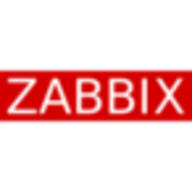

SCOM and Zabbix compete in the IT monitoring solutions category. SCOM has the upper hand in integration with Microsoft products, while Zabbix stands out for its flexibility and scalability in diverse environments.
Features: SCOM provides extensive monitoring capabilities for Microsoft products and applications, effective integration with Windows environments, and a robust framework for creating customized monitoring solutions. Zabbix offers a flexible and scalable open-source platform with support for various environments, custom templates, and strong community backing.
Room for Improvement: SCOM has challenges with high licensing costs for larger deployments and requires significant hardware resources. Its dashboards could be more user-friendly, and integration with non-Microsoft products needs enhancement. Zabbix could improve its user interface for non-technical users, reporting capabilities, automation tools, and provide more default templates for faster deployment.
Ease of Deployment and Customer Service: SCOM is primarily designed for on-premises and hybrid cloud environments, often requiring considerable setup time but offers excellent integration with other Microsoft products and solid customer support with a Microsoft Premier agreement. Zabbix, as an open-source model, provides flexible deployment across environments, relies on community resources for support, and is generally easier to deploy and manage compared to SCOM.
Pricing and ROI: SCOM is part of the Microsoft System Center suite and can be expensive, yet its integration capabilities with Microsoft environments justify its ROI for organizations focused on Microsoft technologies. Zabbix is free and appeals to budget-conscious organizations due to its open-source nature, offering cost-effective monitoring though it requires a time investment for setup, leading to favorable ROI for enterprises willing to manage independently.
They often treat issues in isolation, not considering how one problem might relate to another.
It is so straightforward that I have never had to use the support.
Zabbix is very scalable and lightweight.
I would rate its scalability ten out of ten.
SCOM is a bit unstable lately, primarily due to a lack of resources.
Zabbix is very scalable and lightweight.
I would like to see a software-as-a-service version in Azure to eliminate the need for on-premise infrastructure.
SCOM is likely to be phased out in favor of more compatible tools like Icinga for application monitoring or when moving to cloud solutions like CloudWatch and Azure.
The only issue I can note is that it's Linux-based, and Linux documentation is not the best.
It is literally free.
It assists me in detecting server downtime and delivers basic performance monitoring right out of the box.
SCOM integrates several systems and offers correlation features, like setting up everything around Active Directory or DNS.
If disk usage surpasses a threshold, say 70%, I receive alerts and can take proactive action.


SCOM (System Center Operations Manager) is a cross-platform data center monitoring and reporting tool that checks the status of various objects defined within the environment, such as server hardware, system services, etc. The solution allows data center administrators to deploy, configure, manage, and monitor the operations, services, devices and applications of multiple enterprise IT systems via a single pane of glass. It is suitable for businesses of all sizes.
SCOM Features
SCOM has many valuable key features. Some of the most useful ones include:
SCOM Benefits
There are several benefits to implementing SCOM. Some of the biggest advantages the solution offers include:
Reviews from Real Users
Below are some reviews and helpful feedback written by PeerSpot users currently using the SCOM solution.
A Manager at a financial services firm says, “The feature I like most about SCOM is that it is easy-to-use. I find it very user-friendly. I also like the knowledge base which it has. You can find the resolution to questions or issues directly within the SCOM itself. It will alert you with a recommendation of what you need to do at the same time. This sort of self-diagnosis or prompting is one of the great values you get from SCOM compared to other solutions.”
PeerSpot user Zahari Z., Information Technology Auditor at a financial services firm, mentions, “Availability monitoring is the feature I have found most valuable, as well as the capacity and ability to send notifications. There is a mechanism to set up a notification from the SCOM and whenever there is a drop in the availability the notification alerts not only for availability but for other issues as well. You can align thresholds according to the speed of your environment and you can have a threshold related notification, which is one of the useful features.”
Bill W., Sr. Systems Engineer at Arapahoe County Government, comments, “ I like some of their newer features, such as maintenance schedules, because SCOM records SLA and SLO time. When we patch, things are automatically put into maintenance mode so that the numbers for our systems being down, do not count against us.”
A Project Manager at a tech services company explains, “The feature I have found most valuable is the book feature. While we run the Sprint one we can add some setups for multiple sprints.”
A Systems Engineer at an educational organization states, “Because it's Windows-based, it actually reports quite well. It reports everything you can think of on the Windows server and allows you to monitor anything. It's excellent for those in the Windows world as it's very good at it.”
Zabbix is an open-source monitoring software that provides real-time monitoring and alerting for servers, networks, applications, and services.
It offers a wide range of features including data collection, visualization, and reporting.
With its user-friendly interface and customizable dashboards, Zabbix helps organizations ensure the availability and performance of their IT infrastructure.
We monitor all Network Monitoring Software reviews to prevent fraudulent reviews and keep review quality high. We do not post reviews by company employees or direct competitors. We validate each review for authenticity via cross-reference with LinkedIn, and personal follow-up with the reviewer when necessary.